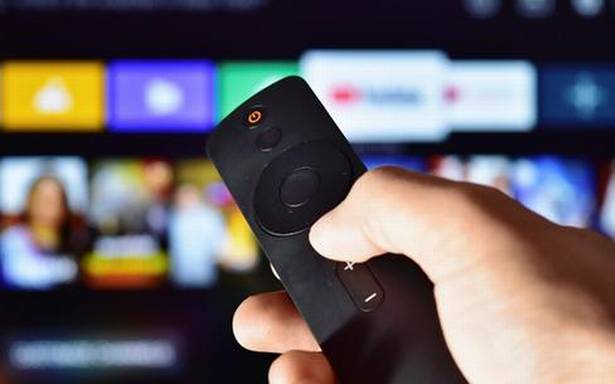After rigging allegations, what steps has the Broadcast Audience Research Council, which releases the ratings, taken?
The story so far: The Information and Broadcasting Ministry has asked the Broadcast Audience Research Council to resume the release of television rating points (TRPs), also known as target rating points, data. It had been suspended in late 2020 after the police unearthed a ratings scandal, acting on a complaint made by the BARC. To begin with, BARC has been asked to release data of the last three months in a monthly format for a “fair and equitable representation of true trends.”
Why were the ratings suspended?
Acting on a complaint by the BARC, the viewership measurement body for television, and one of its contractors, Hansa Services Pvt Ltd., the Mumbai police on October 8, 2020, said it had busted a TRP racket run by three news channels who were manipulating viewership ratings by bribing panel homes where measurement meters had been placed.
The police had named three television news channels in the case which led to the arrest of senior-level functionaries of the named channels and the former chief executive officer of BARC. BARC suspended the ratings for all news channels soon thereafter.
The measurement company had then said the exercise to improve their statistical robustness and reduce the potential of infiltrating panel homes could take anywhere between 8-12 weeks.
Why are ratings important?
The resumption of viewership data after over a year is crucial as TV ratings are the measure on the basis of which advertising revenue is benchmarked. The Indian TV advertising is worth over ₹32,000 crore. Both advertisers and broadcasters pay a hefty fee to subscribe to the viewership findings which come out every week. Rigging meant faulty calculations for advertisers and loss of revenue for stakeholders running into crores.
It is not the first time it has been reported that ratings are being rigged. In 2002-2003, former director general of Doordarshan S.Y. Quraishi wondered how the national broadcaster with a news share of 92% did not figure at the top of the TRP list brought out by the Television Audience Measurement (TAM). Households where meters were installed were being bribed, Mr. Quraishi claimed. A couple of years later, news channel NDTV sued TAM’s parent companies in New York, accusing them of publishing data which was suspect.
Eventually, TAM bowed out and BARC was founded in 2010 by the Indian Broadcasting Foundation (IBF), the Advertising Agencies Association of India (AAAI), and the Indian Society of Advertisers —representative of the media industry with all its stakeholders.
How was BARC viewership an improvement over TAM?
For one, the sample size was scaled up to more than 30,000 households compared to the 9,600 under TAM, considered grossly inadequate for an industry of this size.
Second, with multiple stakeholders on its rolls, BARC was taken as representing the media industry.
For a while, things worked smoothly till the scam of 2020, mirroring the exact allegations levelled against TAM of data being rigged to help a few.
What happens now?
With the I&B Ministry directing BARC to roll out the data, officials explained that BARC has undergone a course correction following the recommendations of a TRP committee set up in the wake of the scam.
In line with the recommendations, BARC has appointed an oversight mechanism and has made allowances for the induction of independent members to its fold.
Meanwhile, the I&B Ministry constituted a committee under the Prasar Bharati Corporation CEO, Shashi Shekhar Vempati, to review the existing guidelines for TV ratings and come out with recommendations.
The committee is expected to submit its report soon.
Source: Read Full Article
